There’s no such thing as a one-size-fits-all approach to marketing.
This is especially true when it comes to marketing to different age groups.
When dealing with different age groups, genders, income levels, etc., you need to be flexible and understand the psychology and habits of each customer base.
Easier said than done.
This is where customer segmentation comes in. Customer segmentation is the practice of dividing your audience into different types of people.
There are all kinds of ways to segment your customers. Some businesses choose to segment by value, frequency of purchase/visit, product interest, acquisition channel, etc.
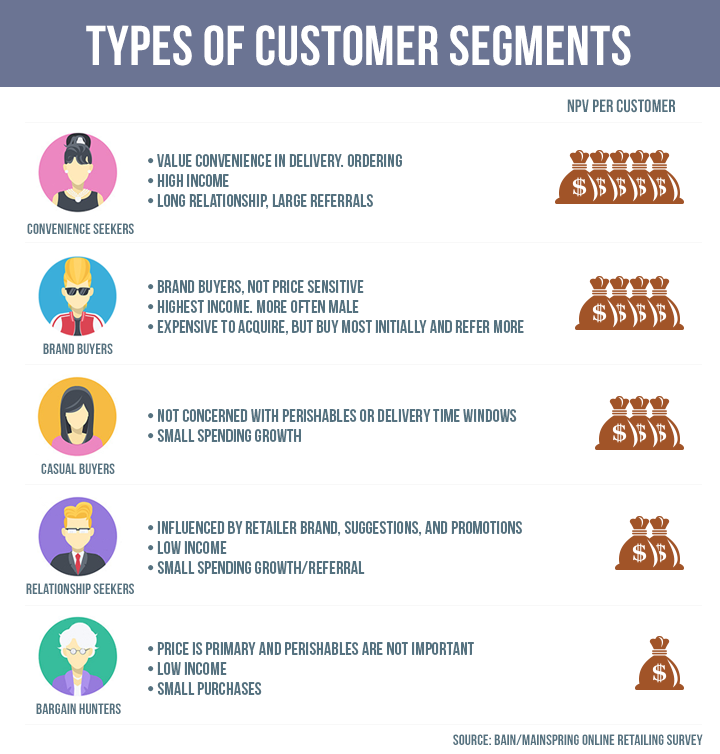
Without segmentation, we don’t think we would have gone very far in business. Using the power of segmentation in our email marketing, content creation, and analytics has allowed us to give the best value to our customers.
Segmentation is especially important in reaching different generations of customers.
Regarding age groups, there are three primary generations you may need to reach at any given time.
- Baby boomers – born between 1946 and 1964
- Generation X – born between 1965 and 1980
- Millennials – born between 1981 and 201996
- Generation Z – born between 1997 and 2012
- Generation Alpha – born between 2013 and now.
We’ve seen many marketers make mistakes regarding segmenting by generation.
- The biggest mistake is thinking that members of a particular generation are all the same—they buy in the same way, respond in the same way, and can be reached in the same way. That’s not the case.
- The other mistake is assuming that every generation can be reached in pretty much the same way. Again, that’s not true. There is enough difference between generations to make us realize that our marketing should differ when attempting to reach different generations.
That’s why we wrote this article. We want to dispel some myths about marketing to different generations.
First, we’ll explain each generation—the facts and figures. Then, we’ll provide a quick list of the best marketing methods for reaching that generation.
How can you use this article?
- If you sell to all three generations, segment your marketing by generation. Use the marketing techniques most likely to appeal to that specific generation.
- If you’re selling to just one generation, tailor your marketing around the techniques that will effectively reach that generation.
Ready for action? Here we go.
Baby boomers
A little over 76 million Americans fall into this age group. Baby boomers were born between 1946 and 1964. The boom refers to how the population spiked around this time—post World War II.

Baby Boomers tend to have the most disposable income of the three generations and account for 43% of all retail sales.
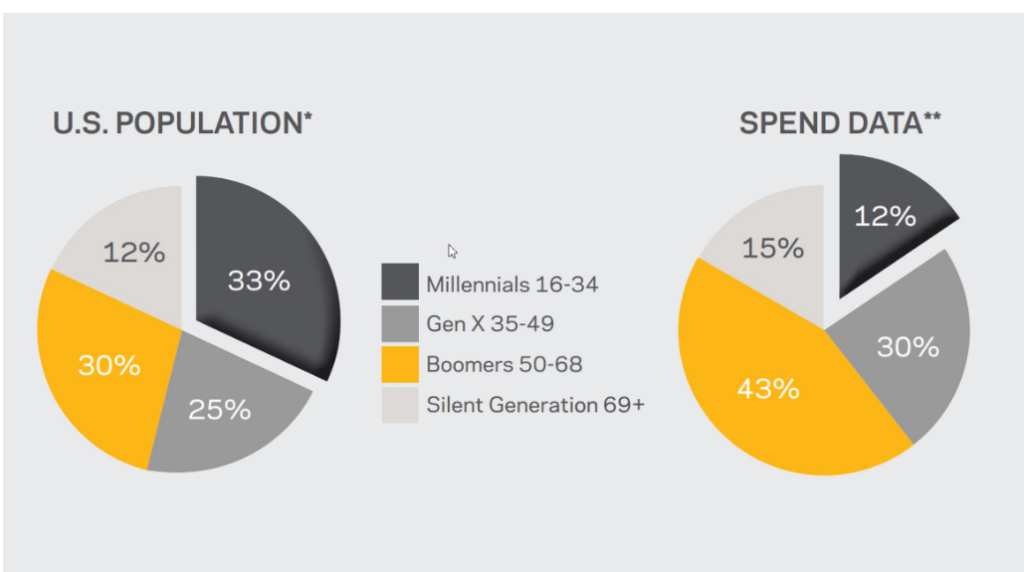
This generation is still growing as many boomers enter retirement and live longer lives due to improved healthcare.
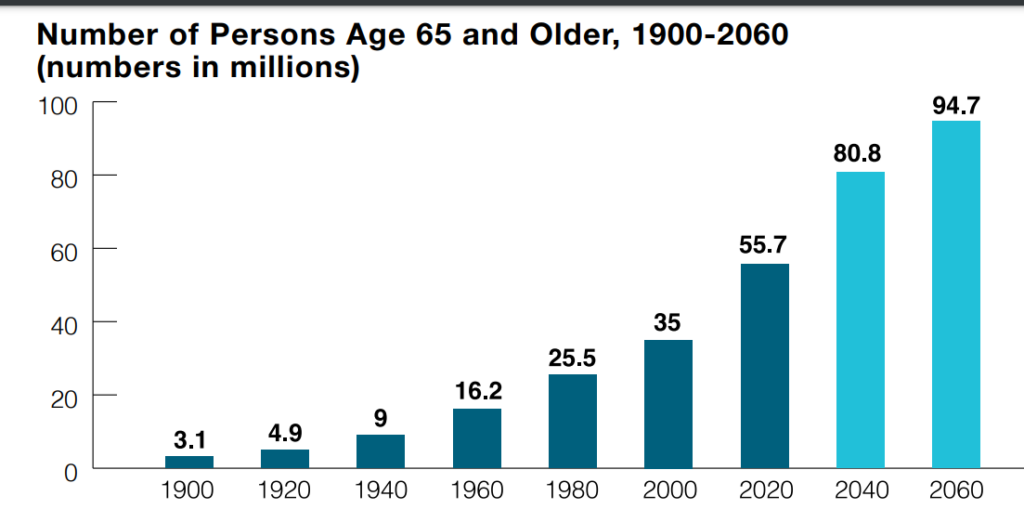
If you’re young, you may think of the Baby Boomer generation as old-fashioned or not tech-savvy.
And you’d be wrong.
Digital marketing—even the most advanced methods—works for baby boomers!
In fact, 85% of baby boomers consistently spend time browsing and shopping online, and “66% of people over 50 in the U.S. routinely make purchases from online retailers.”
Fewer baby boomers than Millennials own smartphones, but a 68.10% ownership rate is quite high!
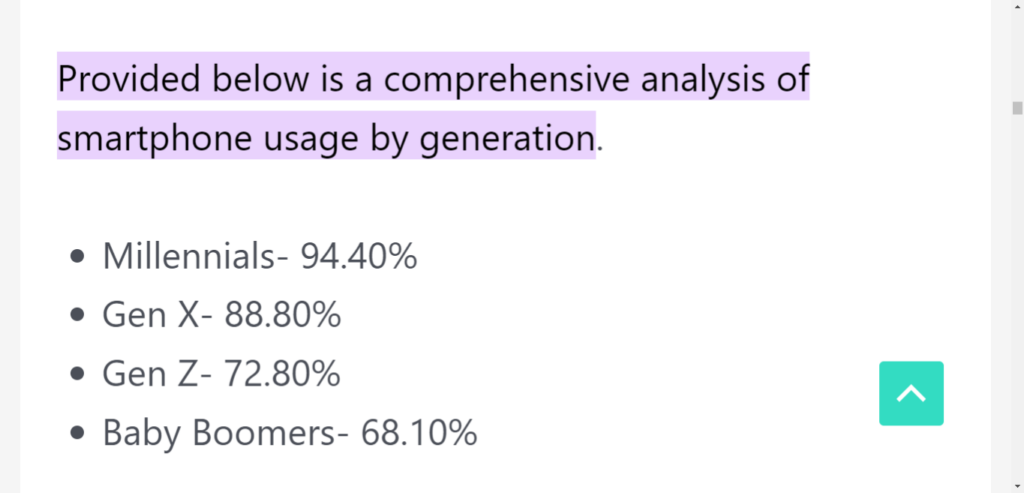
When it comes to tech spending, boomers are the most liberal. They “spend more money on technology than any other age group.”
Nearly half the Internet population is comprised of people aged 45 and up.
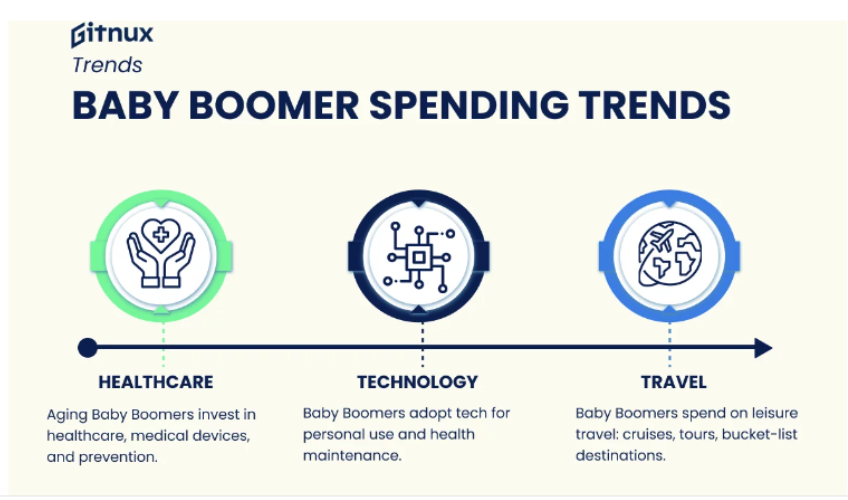
And if you want to talk about social media, this age group has covered it! (Especially Facebook.)
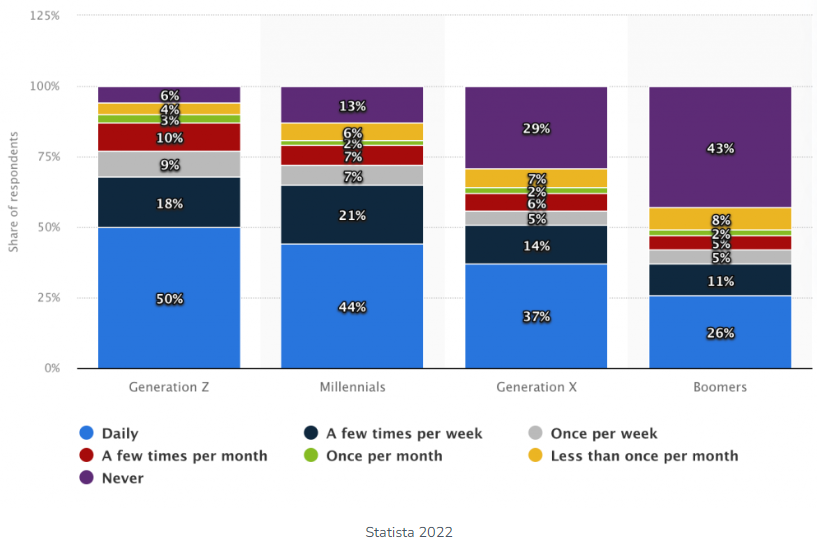
However, reaching this demographic requires a different approach from the approach you’d use trying to reach someone in their 20s or 30s.
For instance, a mobile marketing campaign will likely yield only marginal results. Although 28.3 million baby boomers use smartphones, We still wouldn’t recommend it as a viable strategy simply because most view smartphones as more of a communication device than a shopping tool.
Pymts’ research indicates that baby boomers are the least likely to use a smartphone to make a purchase.
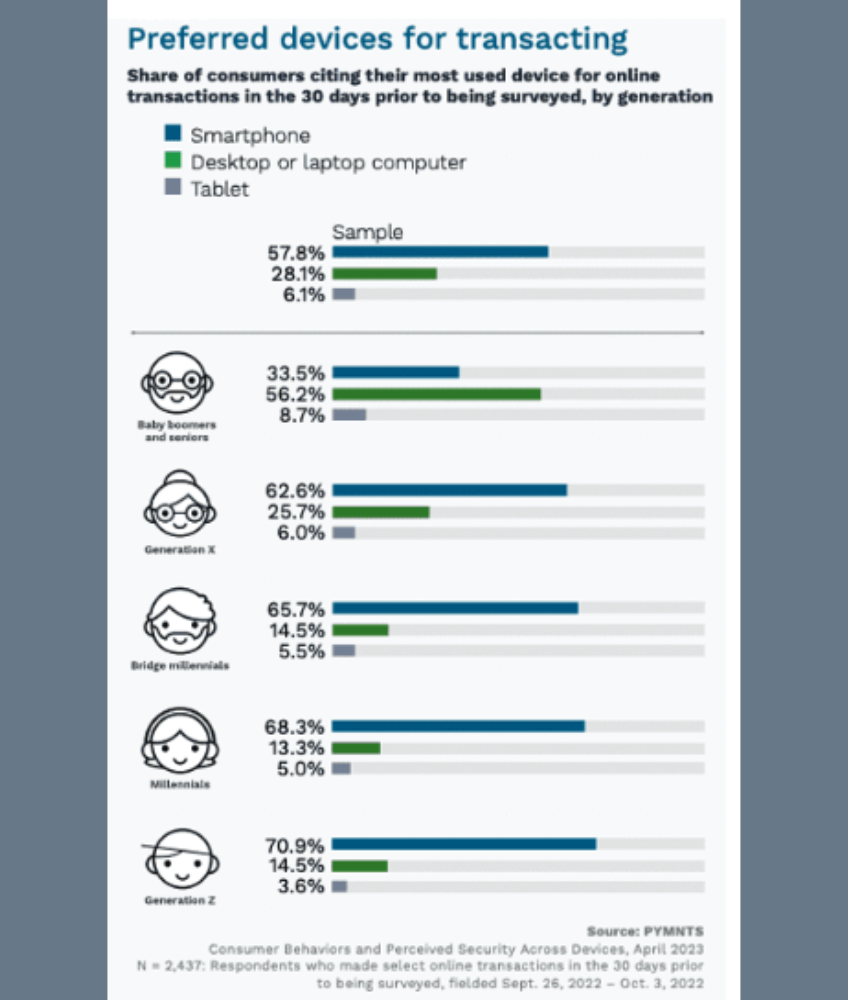
You may also think that social media wouldn’t be a viable medium for reaching this generation.
However, baby boomers account for over a fifth of all social media users. It’s just that they primarily stick to traditional networks such as Facebook.
What’s the best way to reach baby boomers?
- Facebook. The majority of baby boomers have a Facebook account. Targeted ads and relevant content will catch their attention.
- Slower-paced videos. GIF-style videos, live videos, or videos backed by high-intensity music don’t hold as much appeal for them. Use videos to pack in a lot of information; don’t be afraid of using longer videos.
- Content marketing. Baby boomers consume a lot of content, so content marketing will be effective. Be willing to invest liberally in content marketing of all varieties—it’ll bring the biggest ROI.
- Blogging. Blogging is a content marketing method, of course, and it’s one of the most effective.
- Email. An active email marketing campaign is always important and will effectively market to this demographic.
- Direct mail. Baby boomers are more likely to respond to direct mail campaigns than any other generation. If you are reaching this demographic, don’t be afraid to try it.
- Coupon marketing. Many baby boomers have been raised in environments where saving money was important. A smart and targeted coupon marketing approach will effectively reach this generation.
Generation X
This is the generation that’s most overlooked. For some reason, Millennials seem to get most of the attention these days.
Songbird suggests that appealing to nostalgia is an effective way to market to Gen X.
But unless you’re exclusively marketing to people under 45, you’ll want to gain a better understanding of this generation.
While Gen X are out-earning every other generation, they reportedly face concerns about funding their retirement. Whether that eventually curbs spending will be something to consider.
According to American Express, Gen-Xers claim “29 percent of estimated net worth dollars and 31 percent of total income dollars.”
Most tend to be financially stable and have a penchant for saving. Many remain traditional in the way they respond to advertising and marketing.
Among them, 43.3 million use social media, 38.2 million are on Facebook, and 37.3 million have smartphones.
And when it comes to shopping online? This generation is definitely all in!
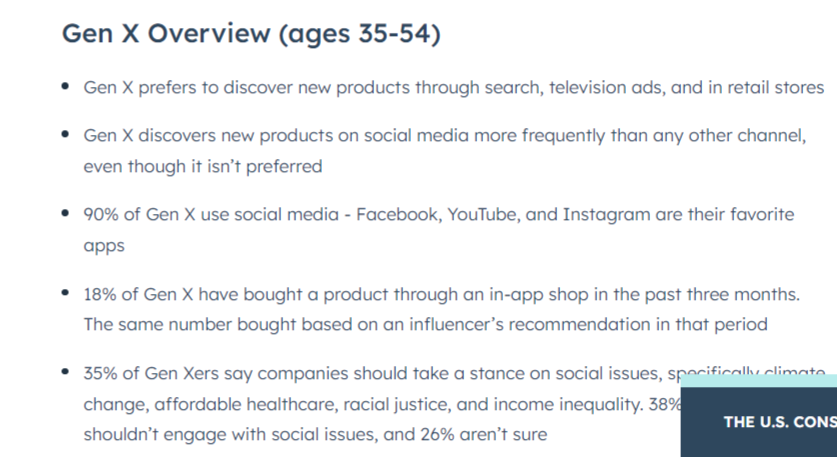
Generation X is considerably more tech-savvy than baby boomers but not nearly as tech-savvy as Millennials.
What’s the best way to reach Gen-Xers?
- Digital video. 78.7% of Gen-Xers download or stream video online at least once per month. Video holds appeal across generations, but Generation X seems particularly attached to it.
- Facebook. It’s safe to say that this generation is firmly in the camp of active Facebook users.
- Twitter. 8.5 million use it regularly. Don’t give up on finding these people on Twitter.
- Blogging. Content of value will help you reap rewards for this demographic. Keep a laser focus on their pain points and aspirations, and deliver with your content.
- Educational content. Gen X is recognized as an educated generation with higher high school graduation rates than previous generations. Over 48% of this generation are actively pursuing continuing education.
- Email. Mobile and desktop email alike will continue to appeal to this generation.
Millennials
This is our generation and the age group that many marketers try tirelessly to appeal to. And with good reason. They’re growing!
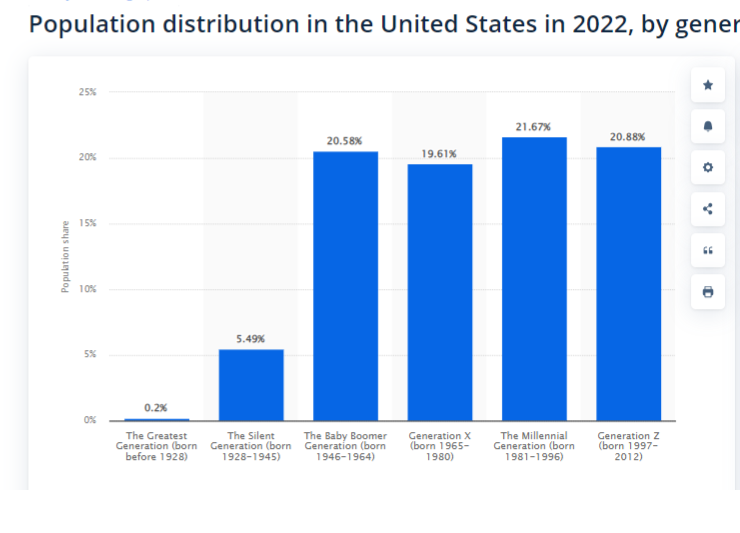
Unlike baby boomers and Gen-Xers, who haven’t always been exposed to computers, Millennials grew up with technology and have never known a world without it.
Some can’t even remember a pre-Internet world.
As a result, this demographic is incredibly tech-savvy.
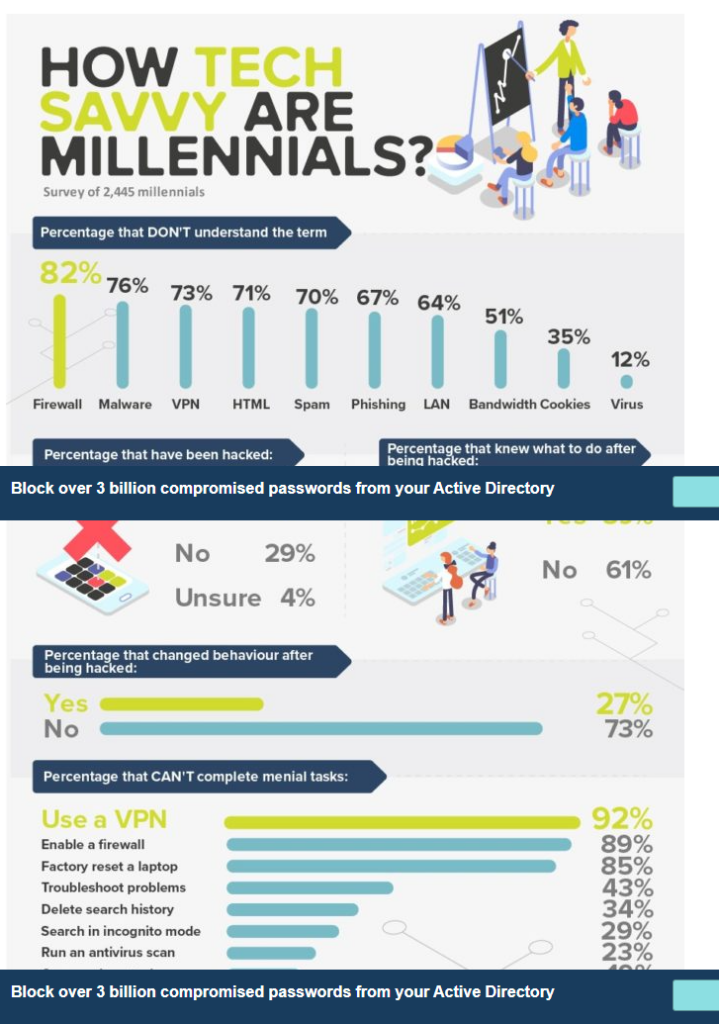
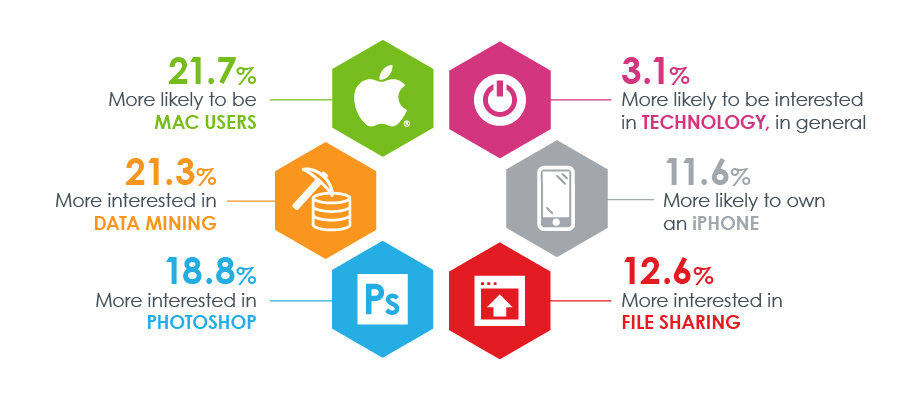
99% of millennials are regular Internet users, and the average person of this generation spends 3.7 hours daily on their smartphone.
When it comes to smartphones, they aren’t just seen as a way to communicate. They’re a way of life.
This age group is also likely to be active on various social networks beyond just Facebook and Twitter. For many, social media is a primary means of communication.
Social media is the vehicle for peer influence: “68% are influenced by their friends’ social media posts when making a buying decision.”

Unlike older generations, who often understand pop culture less, many Millennials appreciate memes and Internet humor.
They get things that baby boomers don’t.
If you’re looking to reach this age group, having a strong online presence is imperative. Putting much effort into online branding and taking reputation management seriously is wise.
Mobile marketing and social media are your best avenues, and “Millennials are 247% more likely to be influenced by blogs or social networking sites.”
Mobile and portability are key. Millennials are more likely to incorporate wearables into their everyday lives, not giving it a second thought.
Many Millennials are also eager to embrace the life of a digital nomad, exercising their mobility to its fullest extent.
Because this generation has arguably the shortest attention span of the three, it’s important to get to the point with your content and use plenty of visuals.
If you need to deliver long-winded information with many stats, remember Millennials often respond favorably to infographics.
What’s the best way to reach Millennials?
- Mobile marketing. Everything is about mobile. If your marketing isn’t mobile-first, it’s ineffective or invisible to this generation.
- Social media. Go deeper than just Facebook and Twitter. Find the niche networks where your target audience hangs out.
- User-generated content is big. Millennials aren’t just content consumers; they are content creators.
- Influencer marketing. Whether it’s a social media friend or a well-known influencer within a niche, Millennials respond to peer recommendations.
- Video. The on-demand video revolution is changing the style and consumption of video marketing. The authenticity and real-time nature of Periscope, Snapchat, and other video platforms appeal to Millennials.
Generation Z
Generation Z, known as Gen Z, the iGeneration, Post-Millennials, or the Homeland Generation, is the newest group of consumers for brands to target.
The oldest members of Gen Z are just graduating from college. This means they are getting full-time jobs. With those jobs come full-time salaries.
As a marketer, you have a great opportunity to target people who have recently experienced increased spending power.
Brand loyalty isn’t that important to this generation. They care more about quality than loyalty:

The best way to reach Gen Z is through social media. But don’t use Facebook. 7% of Gen Z plan on leaving Facebook, indicating a decline in the platform’s relevance amongst this demographic.
Instead, bump up your presence on TikTok and YouTube.
They enjoy using multiple digital media platforms simultaneously. That’s because their average attention span is 2.7 minutes.
Remember this information when marketing to Gen Z. You can reach them on the social platforms they use the most.
Just because they bought something from your brand in the past doesn’t mean they will do it again if they are not pleased with your product.
Conclusion
In order to cast the widest net and reach the largest percentage of your customer base, it’s essential to tailor your marketing campaign to individual age demographics.
You won’t succeed by trying to appeal to everyone. You succeed by appealing to the right people in the right way.
By understanding different generations’ different mindsets and tendencies, you can make your marketing efforts go further and build relationships with people of all ages.
